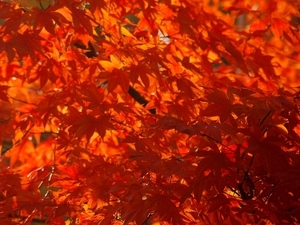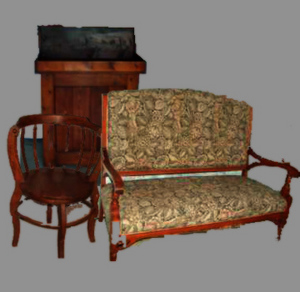The Autumn Blaze (Acer x freemanii ‘Jeffersred’) maple tree is cross between a red maple and silver maple tree. This fast growing deciduous tree can reach 60 feet tall. The green leaves of Autumn Blaze turn a brilliant red-orange in the fall as temperatures drop, giving this maple tree its trademarked name. Suitable for USDA planting zones 3 through 8, Autumn Blaze tolerates both drought and wet periods. Deciduous trees, like maples, help to reduce home heating and cooling costs by shading the house in the summer and allowing needed solar heat to hit the house in winter.
Choosing a location for maple trees
Autumn Blaze maple trees adapt to most soil types, including clay, so there is no need to augment the soil. Choose a full sun location that drains well and does not have overhead wires that might interfere with the tree’s growth. Planting the tree at least 30 feet from a roadway that may be treated with salt in the winter helps to prevent damage to the tree that could result in discolored leaves. Avoid planting within about 20 feet of a driveway or walkway that could compress the roots of the growing tree, or worse yet, cause the driveway or walkway to buckle with root growth.
This maple tree reaches about 40 feet in width when full grown. If planting more than one tree, set them about 40 feet apart. Before you dig, contact your local utilities to check the desired planting area for buried utility lines, or water or sewage pipes. The best time to plant trees is in the fall while the tree is dormant. However, trees may be planted anytime of the year as long as the soil in not frozen.
Planting trees
Dig the hole at least twice as wide as the root ball of the Autumn Blaze maple tree. Dig the hole as deep as the root ball is tall. Remove the tree from the container; if wrapped in burlap, do not remove the burlap. Place the root ball into the center of the hole. Push soil back into the hole around the root ball. When the hole is half-full, water lightly around the tree to force gaps from the soil. If planting a ball and burlap wrapped maple tree, cut the wire or cord holding the burlap and then fold the burlap down, exposing the top half of the root ball. Ensure the tree is still upright by looking at it from several angles and then finish backfilling the hole using the soil removed from the hole.
Use the remaining soil to create a ring around the tree over the perimeter of the root ball. The ring of soil builds a rim to create a saucer-effect. Water the tree deeply by filling the “saucer” with water. Spread 3 to 4 inches of mulch over the ground to cover the dug-up area. Organic mulch, like pine chips or leaf mold (decaying leaves), will help block weed growth while providing a protective covering that helps to reduce moisture loss through sun-heated soil.
Care
Water the newly planted tree every seven to 10 days for the first month after planting (or until the ground freezes if planted in the fall) if there is no rainfall. During the first year of growth, water about twice a month when there is no saturating rainfall. Water deeply around the tree to encourage root growth. Water is critical to maple trees in preventing leaf scorch, particularly during hot weather or in a windy location.
Replenish the mulch around the tree about every three years to maintain a consistent depth of 3 to 4 inches. Tip: Pile the fallen leaves in an area where they can slowly decay to become “leaf mold.” Use leaf mold around flowers, vegetables, trees and shrubs as a natural fertilizer and mulch.
Sources: Autumn Blaze Maple, Washington State University Extension; Maple Tree Decline, University of Rhode Island Landscape Horticulture Program



